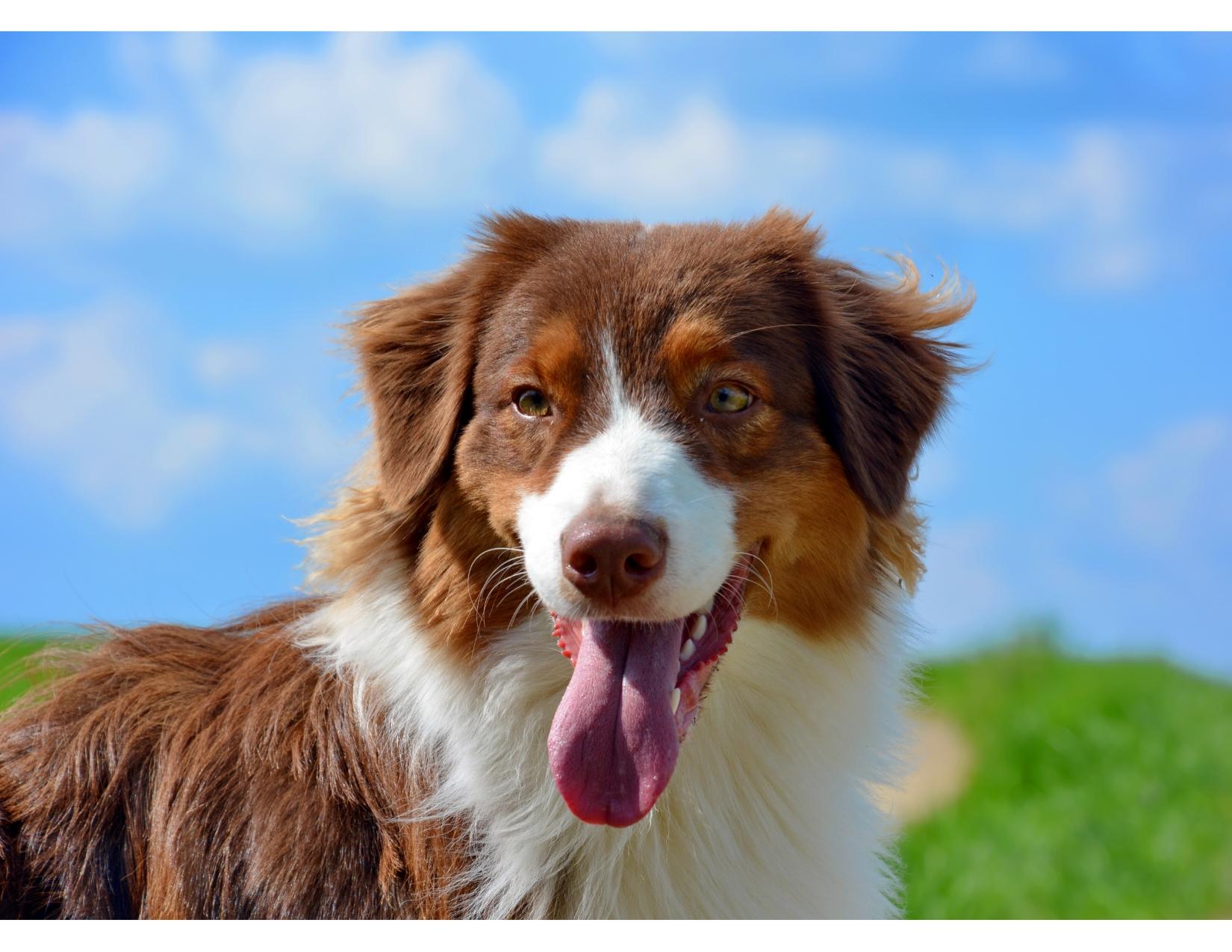AUSTRALIAN SHEPHERD
| Group: | Herding |
|---|---|
| Size: | Medium |
| Temperament: | Smart, Work-Oriented, Exuberant |
| Height: | 20-23 inches (male), 18-21 inches (female) |
| Weight: | 20-30 Kg (male), 20-25 Kg (female) |
| Life Expectancy: | Over 10 years |
| Origin: | USA |
| Coat Length: | Medium |
| Coat Type: | Double |
| Color: | Black Blue Merle Red Red Merle |
About
The Australian Shepherd is a lean, tough ranch dog that originated in Europe and was perfected in California by way of Australia. They are fixtures on the rodeo circuit and are closely associated with the cowboy lifestyle. Aussies have an insatiable desire to herd anything: birds, dogs, and children. Because of their strong work drive, Aussies may be too much dog for a sedentary pet owner. Aussies are remarkably intelligent, and they are quite capable of duping an unsuspecting new owner. To summarise, this is not a pet for everyone. However, if you're looking for a bright, hardworking, and trainable partner for work or sports, your search may come to an end here.
Nutrition
To maximise digestibility and provide the essential amino acids your dog requires, your Australian Shepherd diet should include a high-quality source of animal protein. Fat content ranging from moderate to high. Because Australians are so active, they may require more fat than the average breed. And carbohydrates that are both nutritious and digestible. Whole grains, starchy vegetables, and fresh fruits are all nutritious and easily digestible for dogs, providing dietary fibre, essential nutrients, and energy. Dog foods containing byproducts, fillers, and artificial additives should be avoided. At all times, clean, fresh water should be available.
Ideal Meal Breakdown
Protein
43
Fat
20
Carbohydrates
28
Others
9
Exercise
The Aussie, an athletic, high-energy dog, requires a lot of exercise every day. He ought to have access to a sizable, enclosed yard at the very least, where he can play for a while each day. Aussies form strong bonds with their owners and adore going on long walks—or, even better, hikes—with them. An Aussie can be a great running companion once puppyhood is over and his skeletal system is fully developed. The best course of action is to find the Aussie a job, whether it be tending to livestock, watching over children, or taking part in dog sports like dock diving, obedience, herding, or agility trials.
Grooming
The waterproof, double-layer coat of the Australian Shepherd will typically look its best after weekly brushing sessions. However, there will be more work to be done during the shedding season. Every two to three days during this time, the undercoat rake can be used to remove the copious dead hair, and then the wire brush can be used to clean up the area. Aussies frequently work and/or play outside, so it's common for them to arrive at their destination dirtier than when they left. However, they only occasionally need a bath unless they've gotten themselves into a particularly messy situation. Like all breeds, the Aussie's nails require routine trimming.
Training
Early socialisation and obedience training are critical for the Australian Shepherd. One of the most common reasons Aussies end up in rescue situations is the owners' inability (or unwillingness) to use training to constructively channel the breed's boundless energy. Aussies form strong attachments to their families and can be possessive and overly protective of their owners' belongings. They can also become destructive if left alone for extended periods of time. Thankfully, the breed's high level of intelligence and energy, coupled with their loyalty, make them incredibly easy to train.
Health
The Australian Shepherd is generally a healthy breed. Nonetheless, they share the same health risks as all breeds, including epilepsy, hip dysplasia, and eye issues. Regular exercise and a balanced diet are crucial for maintaining good health. In order to avoid skin and coat problems, proper grooming is also essential. Your Australian Shepherd can live a long and healthy life if you take care of their health issues right away and have regular veterinary checkups.
History
The best herdsmen in Europe are the ancestors of the Australian Shepherd. The world tour of the Aussie got underway close to the Pyrenees Mountains in Europe. The Basques, a native people who live on the border of France and Spain, developed their long-standing reputation as elite shepherds here. The Pyrenean Shepherd, ancestor of the modern Aussie, was their preferred herding dog. Early in the Eighteenth century Anglo emigrants from Australia made a push into the vast interior of the continent in search of fertile pastureland for cattle ranching. Many Basques eventually sailed east to try their luck on the uninhabited Australian continent, a wide-open paradise for sheep herders, with their devoted shepherd dogs in tow. Ranchers in California admired the Basques' herding dogs and mistook them for an Australian breed, hence the misleading name Australian Shepherd. Since then, Aussies have been an iconic part of cowboy culture, refined and perfected in America. Many are still happily herding in the American West, while others make a living as rodeo performers, and still others work as therapy dogs, drug detectors, service dogs, and search-and-rescue dogs.
